Abstract
Rapid regulatory developments in the area of environmental endocrine disruption present a series of potential problems that are identified and illustrated with examples taken from the recent literature. A list of priorities is provided, including the need for additional epidemiological and wildlife studies, the derivation of a coordinated testing strategy, agreement on the toxicities expected of endocrine disrupting agents, and acceptance that whole animal assays will be uniquely critical in this area of toxicology. The intrinsic difficulty of attempting to simultaneously study all aspects of endocrine disruption indicates the need to reduce the scope of the problem, which can be achieved by first studying toxicities mediated by sex hormone receptors.
Full text
PDF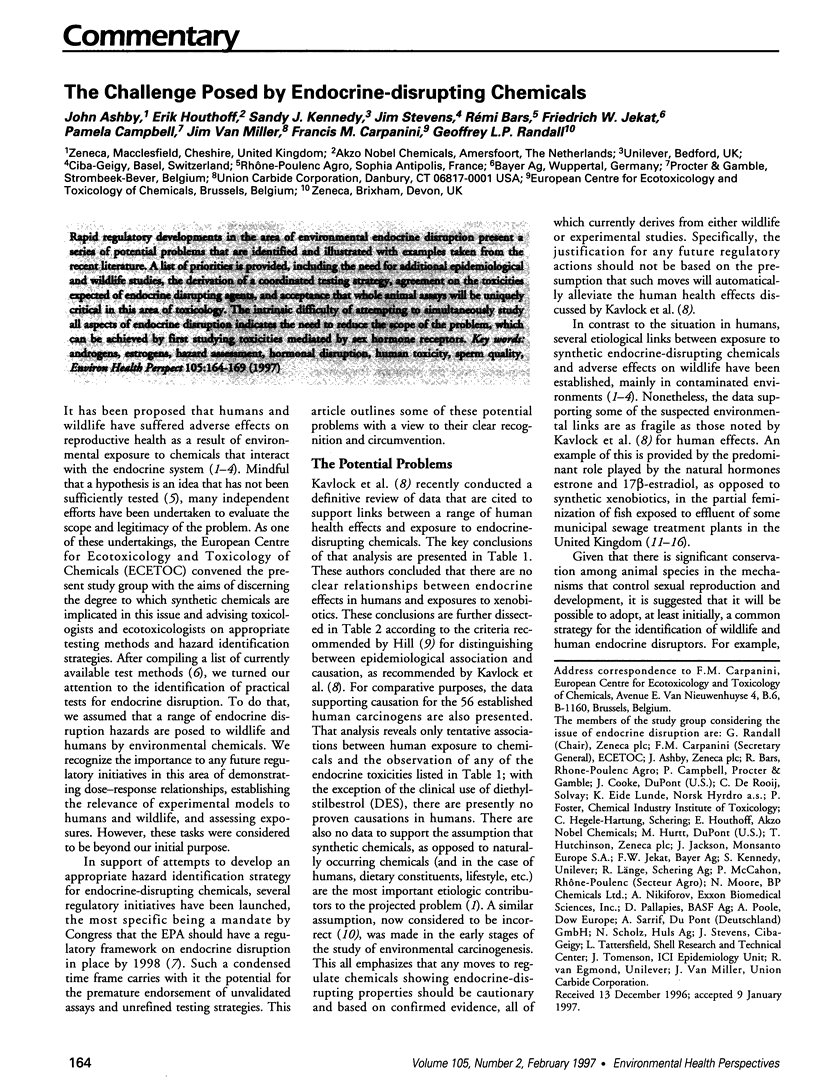
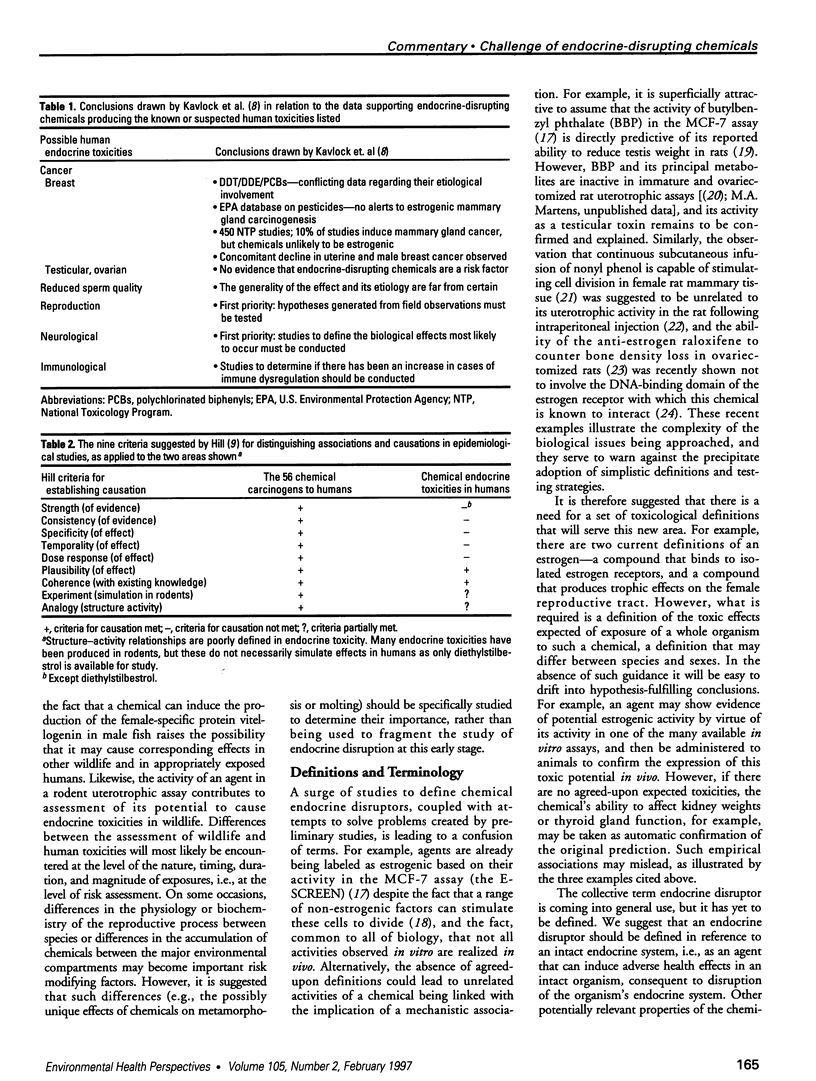
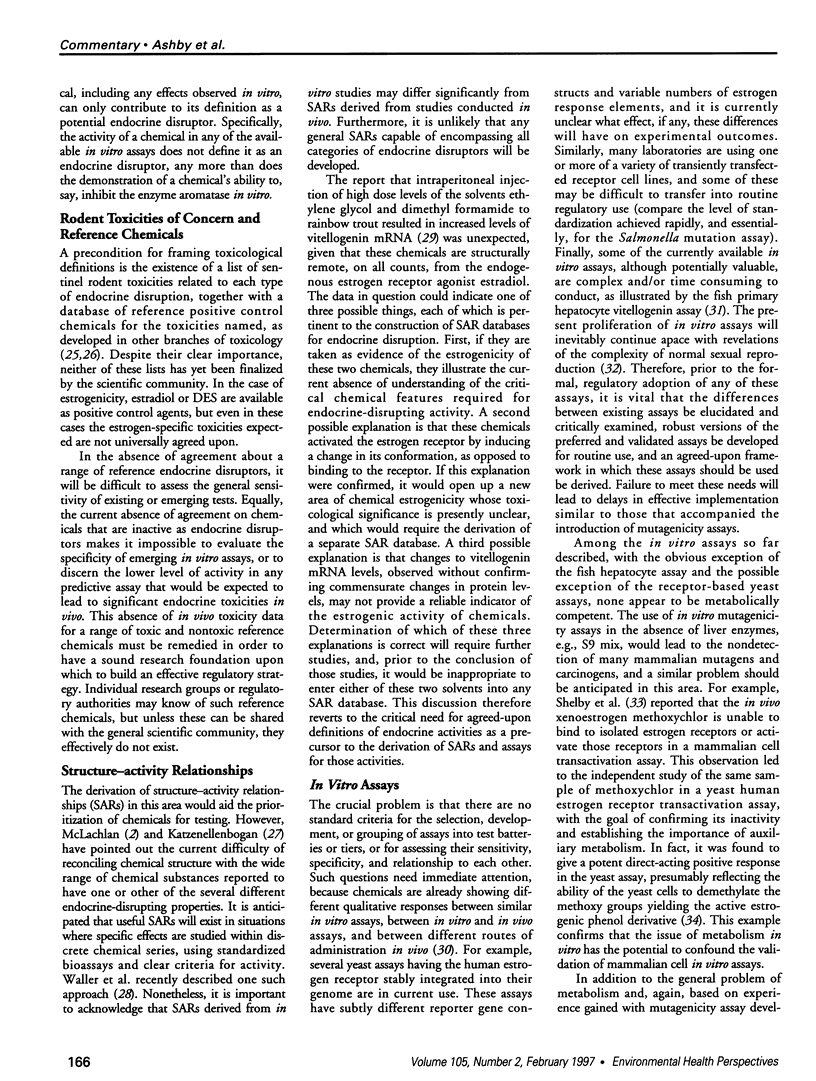
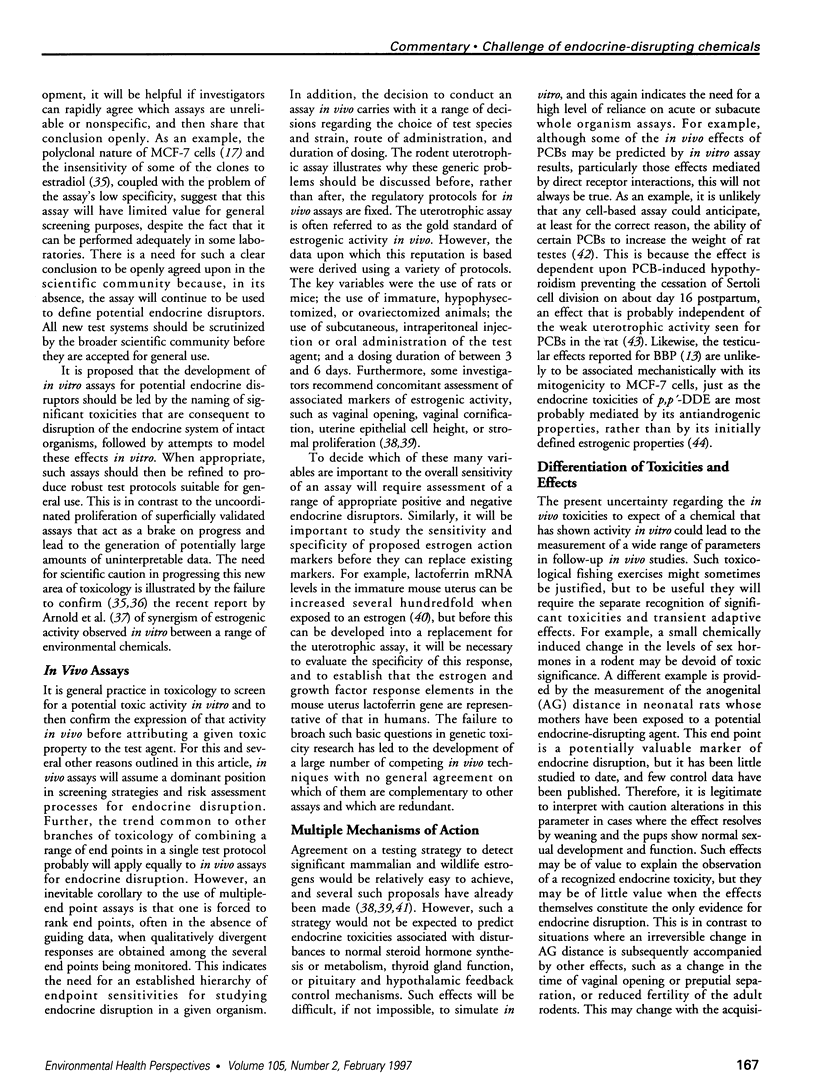
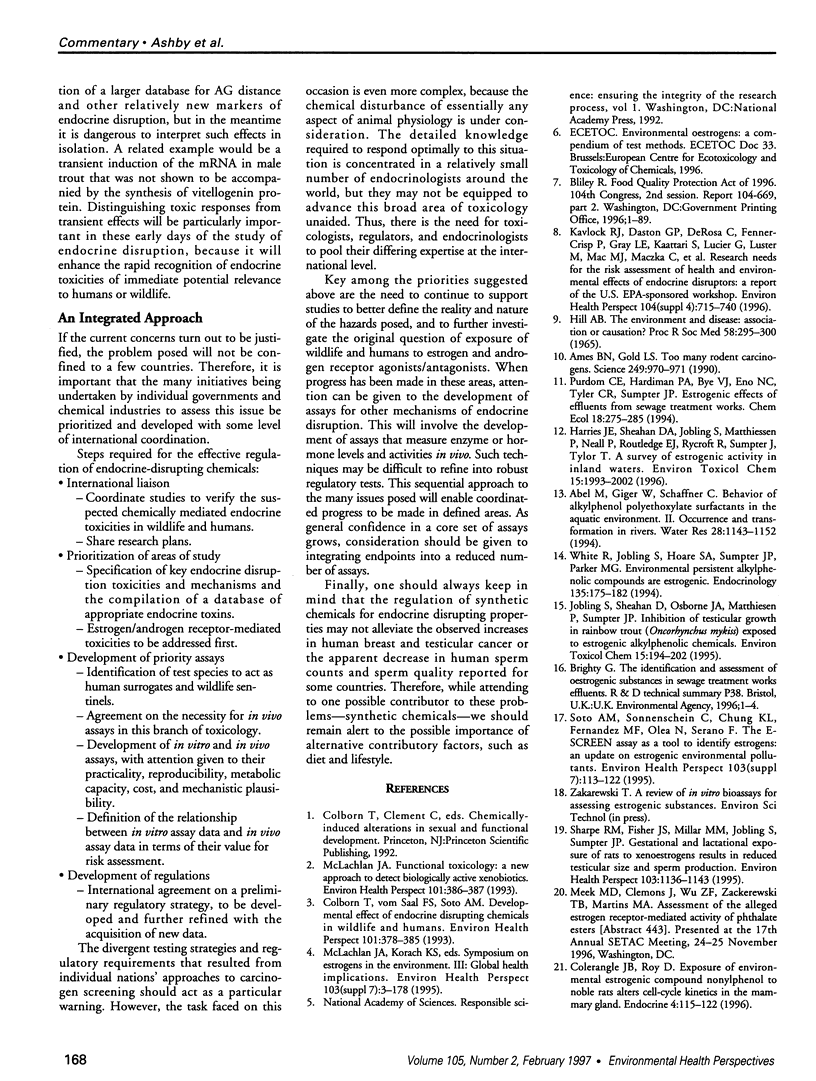
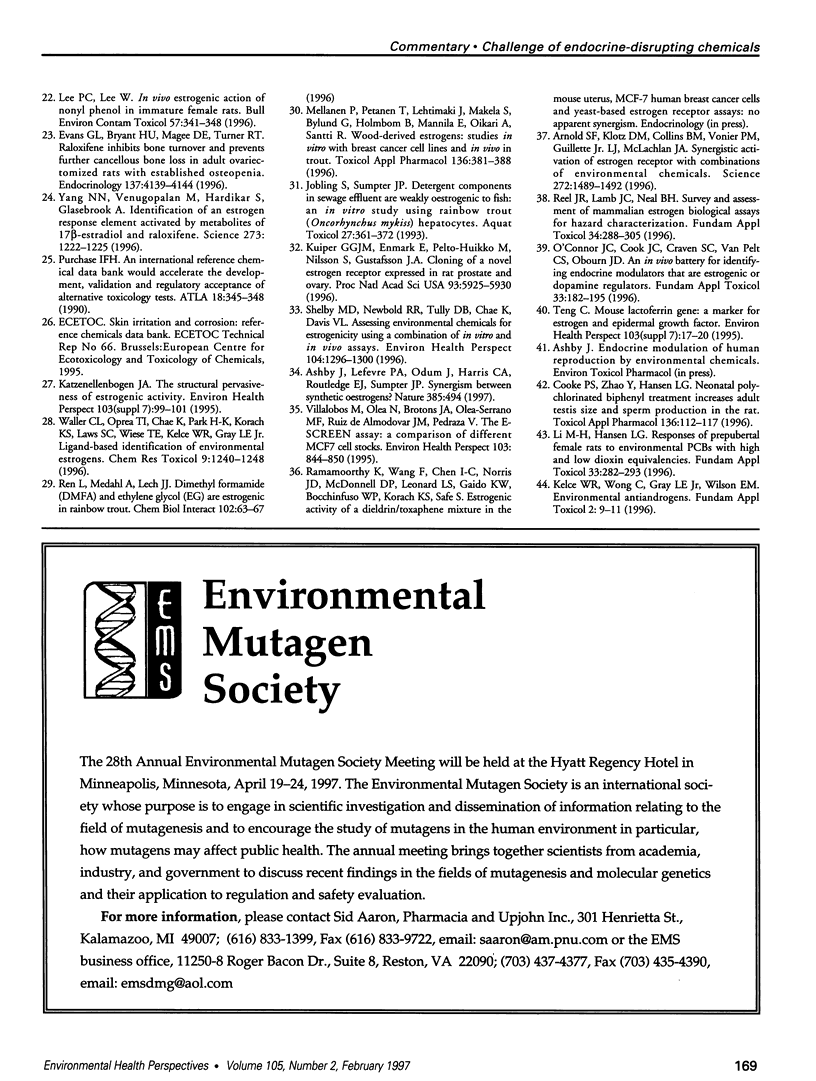
Selected References
These references are in PubMed. This may not be the complete list of references from this article.
- Ames B. N., Gold L. S. Too many rodent carcinogens: mitogenesis increases mutagenesis. Science. 1990 Aug 31;249(4972):970–971. doi: 10.1126/science.2136249. [DOI] [PubMed] [Google Scholar]
- Arnold S. F., Klotz D. M., Collins B. M., Vonier P. M., Guillette L. J., Jr, McLachlan J. A. Synergistic activation of estrogen receptor with combinations of environmental chemicals. Science. 1996 Jun 7;272(5267):1489–1492. doi: 10.1126/science.272.5267.1489. [DOI] [PubMed] [Google Scholar]
- Ashby J., Lefevre P. A., Odum J., Harris C. A., Routledge E. J., Sumpter J. P. Synergy between synthetic oestrogens? Nature. 1997 Feb 6;385(6616):494–494. doi: 10.1038/385494a0. [DOI] [PubMed] [Google Scholar]
- Colborn T., vom Saal F. S., Soto A. M. Developmental effects of endocrine-disrupting chemicals in wildlife and humans. Environ Health Perspect. 1993 Oct;101(5):378–384. doi: 10.1289/ehp.93101378. [DOI] [PMC free article] [PubMed] [Google Scholar]
- Cooke P. S., Zhao Y. D., Hansen L. G. Neonatal polychlorinated biphenyl treatment increases adult testis size and sperm production in the rat. Toxicol Appl Pharmacol. 1996 Jan;136(1):112–117. doi: 10.1006/taap.1996.0013. [DOI] [PubMed] [Google Scholar]
- Evans G. L., Bryant H. U., Magee D. E., Turner R. T. Raloxifene inhibits bone turnover and prevents further cancellous bone loss in adult ovariectomized rats with established osteopenia. Endocrinology. 1996 Oct;137(10):4139–4144. doi: 10.1210/endo.137.10.8828469. [DOI] [PubMed] [Google Scholar]
- HILL A. B. THE ENVIRONMENT AND DISEASE: ASSOCIATION OR CAUSATION? Proc R Soc Med. 1965 May;58:295–300. [PMC free article] [PubMed] [Google Scholar]
- Katzenellenbogen J. A. The structural pervasiveness of estrogenic activity. Environ Health Perspect. 1995 Oct;103 (Suppl 7):99–101. doi: 10.1289/ehp.95103s799. [DOI] [PMC free article] [PubMed] [Google Scholar]
- Kavlock R. J., Daston G. P., DeRosa C., Fenner-Crisp P., Gray L. E., Kaattari S., Lucier G., Luster M., Mac M. J., Maczka C. Research needs for the risk assessment of health and environmental effects of endocrine disruptors: a report of the U.S. EPA-sponsored workshop. Environ Health Perspect. 1996 Aug;104 (Suppl 4):715–740. doi: 10.1289/ehp.96104s4715. [DOI] [PMC free article] [PubMed] [Google Scholar]
- Kuiper G. G., Enmark E., Pelto-Huikko M., Nilsson S., Gustafsson J. A. Cloning of a novel receptor expressed in rat prostate and ovary. Proc Natl Acad Sci U S A. 1996 Jun 11;93(12):5925–5930. doi: 10.1073/pnas.93.12.5925. [DOI] [PMC free article] [PubMed] [Google Scholar]
- Lee P. C., Lee W. In vivo estrogenic action of nonylphenol in immature female rats. Bull Environ Contam Toxicol. 1996 Sep;57(3):341–348. doi: 10.1007/s001289900196. [DOI] [PubMed] [Google Scholar]
- Li M. H., Hansen L. G. Responses of prepubertal female rats to environmental PCBs with high and low dioxin equivalencies. Fundam Appl Toxicol. 1996 Oct;33(2):282–293. doi: 10.1006/faat.1996.0166. [DOI] [PubMed] [Google Scholar]
- McLachlan J. A. Functional toxicology: a new approach to detect biologically active xenobiotics. Environ Health Perspect. 1993 Oct;101(5):386–387. doi: 10.1289/ehp.93101386. [DOI] [PMC free article] [PubMed] [Google Scholar]
- Mellanen P., Petänen T., Lehtimäki J., Mäkelä S., Bylund G., Holmbom B., Mannila E., Oikari A., Santti R. Wood-derived estrogens: studies in vitro with breast cancer cell lines and in vivo in trout. Toxicol Appl Pharmacol. 1996 Feb;136(2):381–388. doi: 10.1006/taap.1996.0046. [DOI] [PubMed] [Google Scholar]
- O'Connor J. C., Cook J. C., Craven S. C., Van Pelt C. S., Obourn J. D. An in vivo battery for identifying endocrine modulators that are estrogenic or dopamine regulators. Fundam Appl Toxicol. 1996 Oct;33(2):182–195. [PubMed] [Google Scholar]
- Reel J. R., Lamb IV J. C., Neal B. H. Survey and assessment of mammalian estrogen biological assays for hazard characterization. Fundam Appl Toxicol. 1996 Dec;34(2):288–305. doi: 10.1006/faat.1996.0198. [DOI] [PubMed] [Google Scholar]
- Ren L., Meldahl A., Lech J. J. Dimethyl formamide (DMFA) and ethylene glycol (EG) are estrogenic in rainbow trout. Chem Biol Interact. 1996 Sep 27;102(1):63–67. doi: 10.1016/0009-2797(96)03727-1. [DOI] [PubMed] [Google Scholar]
- Sharpe R. M., Fisher J. S., Millar M. M., Jobling S., Sumpter J. P. Gestational and lactational exposure of rats to xenoestrogens results in reduced testicular size and sperm production. Environ Health Perspect. 1995 Dec;103(12):1136–1143. doi: 10.1289/ehp.951031136. [DOI] [PMC free article] [PubMed] [Google Scholar]
- Shelby M. D., Newbold R. R., Tully D. B., Chae K., Davis V. L. Assessing environmental chemicals for estrogenicity using a combination of in vitro and in vivo assays. Environ Health Perspect. 1996 Dec;104(12):1296–1300. doi: 10.1289/ehp.961041296. [DOI] [PMC free article] [PubMed] [Google Scholar]
- Soto A. M., Sonnenschein C., Chung K. L., Fernandez M. F., Olea N., Serrano F. O. The E-SCREEN assay as a tool to identify estrogens: an update on estrogenic environmental pollutants. Environ Health Perspect. 1995 Oct;103 (Suppl 7):113–122. doi: 10.1289/ehp.95103s7113. [DOI] [PMC free article] [PubMed] [Google Scholar]
- Teng C. Mouse lactoferrin gene: a marker for estrogen and epidermal growth factor. Environ Health Perspect. 1995 Oct;103 (Suppl 7):17–20. doi: 10.1289/ehp.95103s717. [DOI] [PMC free article] [PubMed] [Google Scholar]
- Villalobos M., Olea N., Brotons J. A., Olea-Serrano M. F., Ruiz de Almodovar J. M., Pedraza V. The E-screen assay: a comparison of different MCF7 cell stocks. Environ Health Perspect. 1995 Sep;103(9):844–850. doi: 10.1289/ehp.95103844. [DOI] [PMC free article] [PubMed] [Google Scholar]
- Waller C. L., Oprea T. I., Chae K., Park H. K., Korach K. S., Laws S. C., Wiese T. E., Kelce W. R., Gray L. E., Jr Ligand-based identification of environmental estrogens. Chem Res Toxicol. 1996 Dec;9(8):1240–1248. doi: 10.1021/tx960054f. [DOI] [PubMed] [Google Scholar]
- White R., Jobling S., Hoare S. A., Sumpter J. P., Parker M. G. Environmentally persistent alkylphenolic compounds are estrogenic. Endocrinology. 1994 Jul;135(1):175–182. doi: 10.1210/endo.135.1.8013351. [DOI] [PubMed] [Google Scholar]
- Yang N. N., Venugopalan M., Hardikar S., Glasebrook A. Identification of an estrogen response element activated by metabolites of 17beta-estradiol and raloxifene. Science. 1996 Aug 30;273(5279):1222–1225. doi: 10.1126/science.273.5279.1222. [DOI] [PubMed] [Google Scholar]


